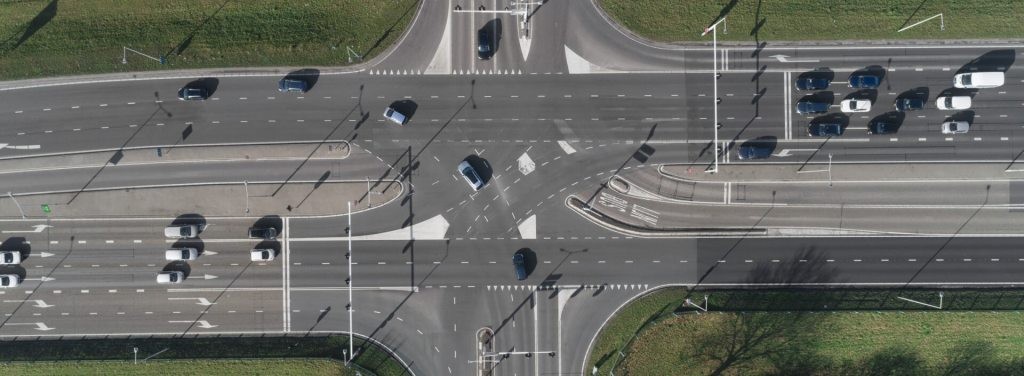What is the Right of Way?
Some drivers have the misconception that the right of way in the United States is a fundamental and protected right. They think of right-of-way laws like the right to freedom of speech. In the eyes of these drivers, if they get in an accident where they had the right of way, they will not be held responsible. This thinking is not only untrue, but hazardous to others. It fails to include any defensive driving practices.
In other words, the concept of the right of way is really a set of rules designed to help traffic flow smoothly in virtually any situation. These rules are sometimes self-explanatory (pedestrians should not walk on the freeway) but can sometimes be confusing (who goes first at a 4-way stop?). In this comprehensive guide, we’re going to cover just about every scenario you’ll encounter on the road.
Right of Way: Driving Straight
If you drive on a straightaway without lights, intersections, or crosswalks, you have the right of way. This means that you do not have to stop for cars entering the roadway. It does not mean that you don’t have to watch out, though. Someone may underestimate the time it takes to cross traffic and turn in front of you. In this case, as we’ve already discussed, you’ll need to slow down to avoid an accident (but feel free to politely tap your horn to point out the driver’s mistake).
There are a couple of exceptions to this scenario, as well as a few other things you need to watch out for, including:
Pedestrians: In our out of crosswalks, watch out for people in the roadway. If there is a crosswalk, pedestrians have the right of way. If there is no crosswalk (and they’re not at an intersection), they may be jaywalking, but you’re still going to have to stop for them. Remember that just because you have the right of way doesn’t mean you get to go no matter what, so if you’re a pedestrian, make sure the cars are going to stop for you before you charge across the road!
Cars turning right off the motorway: Hopefully, they’ll have a blinker and brake lights on, but even if they don’t, you’ll need to slow down and let them turn.
Emergency Vehicles: You are required by law to yield to any: emergency vehicle with sirens and flashing lights. Furthermore, you should move into the left lane when emergency vehicles are parked on the right shoulder of the roadway, if possible (or the right lane if they’re on the left).
School buses: Most states have laws that require motorists to stop for buses that are dropping off or picking up children. Most of these buses will have stop signs that extend and sometimes flash to remind motorists to stop. State laws stipulate how far away you’ll need to stop, so make sure you’re familiar with those laws. Also, buses (and some other vehicles carrying passengers or flammable/hazardous materials) have to stop at railroad crossings. If you are behind one of these vehicles, you will have to stop too.
School buses: Most states have laws that require motorists to stop for buses that are dropping off or picking up children. Most of these buses will have stop signs that extend and sometimes flash to remind motorists to stop. State laws stipulate how far away you’ll need to stop, so make sure you’re familiar with those laws. Also, buses (and some other vehicles carrying passengers or flammable/hazardous materials) have to stop at railroad crossings. If you are behind one of these vehicles, you will have to stop too.
Bicycles: We actually include this one here because they are not an exception. Bicycles are vehicles on the roadway, and they must obey the same laws as other traffic. Some roadways may choose to give bicycles preferential treatment, but those instances will usually be marked.
Always Know Who Has the Right of Way
These rules for right of way should hold just about anywhere in the United States. Still, traffic laws can vary by state, county, and even city, so make sure you familiarize yourself with local laws before you travel. For the most part, though, any special or unique rules will be well-illustrated on roadways. Just remember that having the right of way does not free you from all responsibility. You’ll still need to drive defensively in every situation, so why not take a moment and check out some of our other articles on defensive driving?
Drive safe out there!


